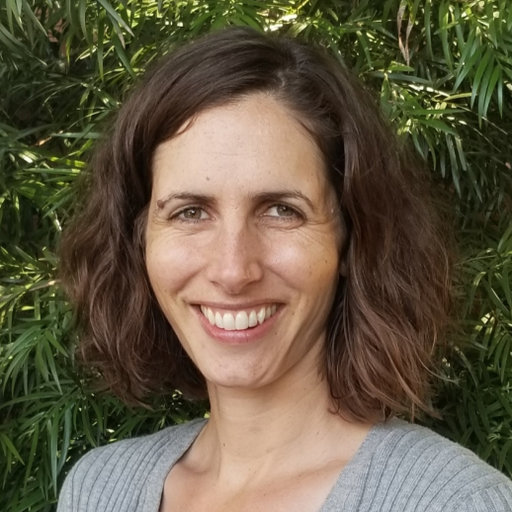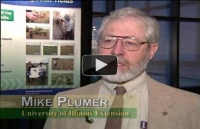Mentorship and Inventiveness
Marc Bremer, 38, is a fourth-generation family farmer from Metropolis, Illinois, whose story unifies two things that characterize the growth of cover crops in the modern era. The first is the importance of mentorship. The second is the role of “ah ha” moments in our lives, which continue to fuel enthusiasm for progress and productivity in agriculture.
In Marc’s case, as with others in this 25th anniversary tribute to annual ryegrass as a cover crop, Mike Plumer’s influence as a teacher has been crucial. And, as for those “ah-ha” moments, you’ve probably come to understand that they occur in every life and every generation, often at the crossroads of challenge and opportunity.
Marc Bremer’s grandfather started a farm and cattle breeding business with his brother after WW II, on what grew to 600 acres. His contribution to the industry included the advancement of cattle breeding practices. Likewise, Marc’s father (David) and grandfather were early adopters of no-till, working with the nearby Illinois Extension at Dixon Springs. Marc’s contributions include the widespread use of cover crops, annual ryegrass in particular, and how it has compounded the farm’s success.
Bremer Brothers Farm seems wedded to the adage, “Work smarter, not harder.” Marc’s great grandfather did that by doing his homework, becoming an avid record keeper, and using that data to drive decisions. “After purchasing their first Angus livestock in the 1950s,” Marc said, “we haven’t bought another female since. My dad was working on a master’s degree in genetics from the University of New Mexico when granddad passed away, prompting dad to come back to the farming operation.” His academic work clearly complemented that which the preceding generations had put to work. The science of breeding, combined with their nutrient-rich, efficient feeding system, has made their herd one of consistent quality and value, decade after decade.

Marc’s grandfather decided in the mid-1960s that no-till would benefit the soil and keep it in place. “With support from Dixon Springs Extension researchers, grandad started using the no-till planting system to great effect,” Marc continued, “and purchased a 6-row Allis Chalmers, which was among the first commercially-available no-till planters. My dad followed suit, continuing to graze crop stubble on our corn and bean acres after harvest. He also started experimenting with cover crops in the 90s, then introduced grazing onto those acres.”
Mike Plumer was a friend of the Extension Agent working in that part of Illinois during those years and became friends with the Bremer’s. That friendship extended to the next generation when, in the early 2000s, Mike visited Marc in Wyoming to hunt antelope on the ranch where Marc worked as a ranch hand and mechanic. In order to be closer to family and move into leadership on Bremer Brothers Farm, Marc moved back to Metropolis in 2010.
By then, Mike had left the university and started a consulting business. By then, he had learned about annual ryegrass and had helped others in southern Illinois add cover crops to their operations. By then, he had partnered with the Oregon Ryegrass Commission and was overseeing research trials in multiple Midwest locations. Mike became more active as an educator as well, advising famers about annual ryegrass at national ag shows and field day demonstrations.
Marc embraced cover crops quickly and, like his father before him, invested in equipment “to expand the farm without more land. We just learned to do better with the 900 acres we had,” he said. After a couple of years using a 15’ Great Plains drill, he purchased a 40’ drill that is pulled behind their 320 hp Cat Challenger on tracks. From the early days, towing a 6-row planter, the Bremer’s have now graduated to a 24-row Kenzi planter.
“It may have been as late as 2011 that Mike convinced me to use annual ryegrass because, by then, he understood that it broke up fragipan soil which is prevalent in this part of the country,” Marc said.
“I didn’t introduce annual ryegrass to the whole farm right away,” he added. “But during the 2012 drought, we saw such a dramatic difference between acres planted in annual ryegrass, versus plain no-till or with cereal rye, that we were convinced.”
The Bremer’s experimented too with whether livestock and grazing the cover crop would affect the growth of annual ryegrass roots. “We brought out a 4’ soil probe and it looked like grazing didn’t impact root growth at all. Compared to neighboring property with no cover crops, it appears that annual ryegrass gradually gets rid of fragipan, does a better job of suppressing weeds and, by having cattle grazing the pastures, there are fewer slugs and voles to contend with.”
In a recent study concluded by the University of Kentucky (Lloyd Murdock), Bremer’s farm was shown to have gained more than 6 inches of new soil in seven years, simply by having annual ryegrass as a cover crop, slowly reclaiming the layer occupied by the otherwise impenetrable fragipan. In the same period, the amount of organic matter increased from 2.0 to 3.5 percent.
Another recent “ah ha” for Marc was that when he terminated the cover crop early in the spring, as he’d been strongly advised to, the fields would remain wet and prolong the planting date of corn or beans. He thought if he let the cover crops grow later, it would allow earlier planting. “I’ve experimented with planting corn into cereal rye as tall as 7’ and annual ryegrass as high as 4 ½ feet. Then I’ll come back and terminate the cover crop, and for the most part it still kills nicely,” he said. “I figure that even if there is some residual seed from the cover crop, it will lay dormant under the corn until fall or can be controlled with a post application of herbicide, which is fine too.”
Bremer Brothers Farm is part of the new round of research mentioned in the last chapter, headed by USDA/Ag Research Service in Iowa. The research at Bremer’s has two aspects: first, how the chemicals exuded by annual ryegrass roots degrade fragipan, and secondly, studying the how grazing cattle on cover crop acreage affects soil hydrology. “This research has widespread value for agriculture,” Marc said, “to better understand nutrient cycling, and how soil holds moisture.”

Marc and his wife have three children, a daughter and two sons. One of the gifts Marc is preparing for them, should they opt to take the farm into the next generation, is that the land is now producing value 11 months of the year, rather than the five or six months of many neighbors. “With cover crops and grazing cattle, the land is more productive, and the soil is healthier,” he said. “Livestock and cash crops work so well together. Annual ryegrass as a cover crop enriches the soil, gets rid of compaction, and improves the water carrying capacity of the soil. Cattle break down crop residue, provide nutrient-rich manure and get rid of voles and slugs. Voles and slugs, as it turns out, can’t bench-press a cow,” he added with a laugh.
“When I arrived from Wyoming in 2010, we had 90 cow/calf pairs and 210 in inventory. To support that herd, we were feeding them 100 tons of hay a year. Today, we have about 110 cow/calf pairs and 275 in inventory. But we’re feeding them less than 90 tons of hay. The difference is that they’re getting fed by grazing cover crops. We’re more profitable, the soil is healthier, and our corn and bean yields are higher. Like my dad and granddad said, ‘You don’t necessarily have to buy more land to expand your business.’”




